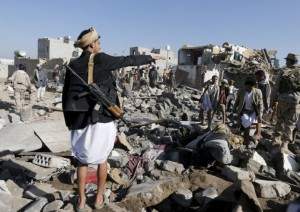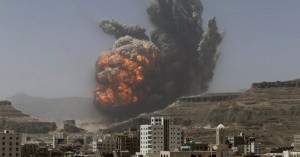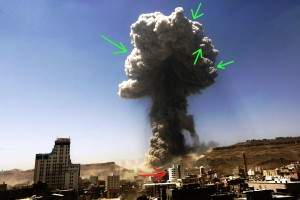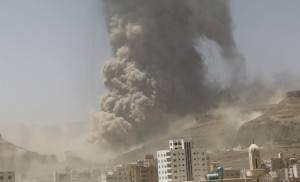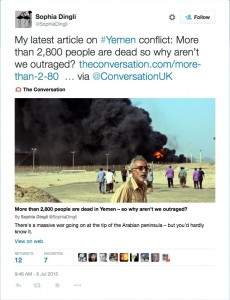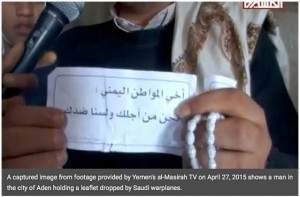An onslaught of imposters
August 15, 2023 by Thomas Wictor
An explanation is in order. Currently it’s impossible for me to keep up with my personal correspondence. I get messages from people asking me why I haven’t answered them. It’s because I can’t. What happened is that my research into the murders of Ismail Bakr, Mohammed Bakr, Ahed Bakr, and Zakaria Bakr caused me to remember events from my childhood that I’d blocked out. Imposters are the bane of my existence, a pattern that continues right up to this very second.
Someone close to the family turned out to be a contract killer for the mafia. I’ve called him “Hank.”
In a conversation with my brother Tim, we discussed certain things for the first time, and then I spent a year researching Hank. Although he covered his tracks quite effectively, nobody can hide from me. By corroborating dates and places with the history of the only American crime family that reached into South America, Central America, and Mexico, I was able to prove that Hank was indeed a contract killer as well as a smuggler and enforcer. He murdered, broke legs, extorted, and burned down businesses.
Hank took me on his jobs and forced me to participate. He was an imposter, a man who pretended to be a jovial, trustworthy, gentle giant. I believe that there’s no such thing as a person who genuinely doesn’t know right from wrong. Hank tried to corrupt me for a myriad of reasons. If I were complicit in his crimes, I wouldn’t tell anyone. Also, he unconsciously tried to mitigate the sheer depravity of what he did by making me take part. The hallmark of the criminal mind is protective rationalization. Criminals make up all sorts of reasons for why they do what they do, but the simple reality is that they enjoy it.
Until I began my quest to prove to myself how Hamas murdered the Bakr boys, I knew that I’d seen and been involved in things that I couldn’t face. Getting inside the heads of the Hamas murderers and viewing closeup video and photos of the dead children—and having Jew-haters send me hundred of photos of dead, mutilated children—finally broke the wall that I’d built around what I saw and did.
Now I’m beginning to remember, against my will. Every night brings atrocities in the form of dreams. So far I’ve confirmed each new development by looking at our vast library of family photos and talking to Tim.
It’s not possible to explain what this is like. The net result is my slow retreat from society. I simply can’t muster the energy to be interested in what others think is bad. They have no clue how bad things can be.
The singer Alanis Morissette explains why I don’t discuss the details of my childhood.
“Art is cathartic but it’s not healing.”
I could puke out my guts here in a way that would leave people gasping for breath. But I always knew instinctively that it wouldn’t solve anything. Here’s what nobody wants to admit: For some of us, there is no healing. All we can do is abide and endure, to quote Lillian Gish in The Night of the Hunter.
Another aspect of having the sort of life I’ve had is that describing it makes it into pornography. I may someday write a memoir about this, but I have to figure out a way to convey an impression of what it’s like rather than just laying out the details.
There are people who make a living describing what they experienced. It becomes a set piece. Personally, I think that trivializes it. You go on TV and talk about experiencing horror that would kill most of us. Then they cut to this.
There’s no boundary between inhuman barbarism and entertainment. The Internet is full of sites that show all manner of actual death. More than thirty years ago I read that being exposed to such material has a paradoxical and amazingly destructive effect: It traumatizes and inures you. Empathy is built into us. When we see suffering, it causes us harm. But overexposure to suffering also numbs us. We therefore crave more and more graphic depictions of violence in order to get the same rush, and that further traumatizes us. It’s a true death spiral.
This is why I limit my exposure to videos and photos of actual death. For example, I’ve watched only one jihadist beheading video. I did it in order to compare the reality to fake Islamic State propaganda.
What I’m trying to do is salvage something from my life. In most senses it’s too late; I’ll never have another relationship, nor have children, nor enjoy being out in society. This is because of the imposters.
I was recently taken to the cleaners financially by an imposter posing as a friend of Israel. We made a movie about the murders of the Bakr boys. It’s a piece of trash that looks like it was put together in one afternoon. Because of my formative experiences, I’m drawn to predators and imposters. I’ve had to adopt a solitary lifestyle for my own safety.
And now I’m reliving everything in my childhood that I blocked out. I guess it has to be done, but I can’t keep up with correspondence, I forget to pay bills, I have daily migraines, and I put off running errands. It’s a strange, paralyzed, twilight existence. But I still like collecting my old postcards, and I look forward every day to seeing the damage that the Sunni Arabs are inflicting on Iran’s proxies. It’s making western academics apoplectic with rage.
How Saudi Arabia got its Yemen campaign so wrong
Saudi Arabia is now embarked on its largest ever effort to “tame” Yemen, but it has already been a disaster: thousands are dead, and the unspeakable destruction wrought by the unprecedented Saudi intervention has undone decades of cautious and under-the-radar meddling.
The start of the Saudi campaign in March 2015 was not a measure of the new Saudi king’s strength or strategic acumen. It simply demonstrated that the new king and his young defence minister had lost a considerable amount of the influence Saudi Arabia had once held over Yemen, possibly leaving the door open for Iran. They panicked, and responded unwisely – no doubt partly in response to their forefather’s warning.
The latest success should not detract from the fact that the Saudi army did very badly in Yemen. It has proved unable to coordinate with Yemeni forces loyal to Hadi in Aden and in the South – indeed, on many occasions it has apparently dropped bombs on them by mistake.
The writer is an imposter. She’s Sophia Dingli, PhD, Lecturer in International Relations at University of Hull. In other words, she has absolutely no knowledge of military matters, campaigns, tactics, strategies, weapons, or ordnance.
Where’s the “unspeakable destruction” she’s wailing about? As in Gaza, I’m seeing the same area photographed over and over.
And as in Gaza, the press is publishing fake photos of explosions. Here’s the actual explosion that took place at a missile base near the Faj Attan neighborhood of Sana’a on April 20, 2015.
The following two photos are said to show the same explosion. They bear no resemblance to the real detonation.
In the first image, that mushroom cloud would be about 5000 feet (1524 meters) tall. No Saudi weapon can produce such a massive smoke tower. You can also see that the shape of the smoke column is the same in both photos. That’s because both images are composites. When we apply the “equalization” function of photo-enhancing software—equalizing the light and dark values to an average—it reveals the fakery.
In the first image, the sunlight strikes the buildings from the left (red arrow), while it hits the mushroom cloud from several directions simultaneously (green arrows).
After equalization of the second photo, we see that the trees and the buildings have been clumsily superimposed, and the sunlight is again illuminating the mushroom cloud from multiple angles.
Finally, there’s flying debris in the genuine photo.
But the higher-quality fake image shows no debris whatsoever.
Photographers Khaled Abdullah and Hani Mohammed are imposters.
As for the “thousands of dead,” the Houthis supply the casualty figures. This is from the initial story on the April 20 explosion at Faj Attan.
The blast wave reportedly blew out a large number of windows. No casualties have been reported so far.
Later the Houthis said that “dozens” were killed. That’s a lie. Since the explosion occurred in an open area of the military base, nobody could’ve been killed unless they were in the underground facility that was struck.
Dr. Dingli also says that the Saudis can’t communicate with their Yemeni allies. In reality the Saudis have been training the Yemenis for months, providing them with equipment and weapons. They’ve achieved total interoperability. All wars have “friendly fire” incidents; they’re unavoidable. And Dr. Dingli forgot to mention a couple of reasons why the Saudis intervened and then escalated.
A Saudi-led military operation has targeted a base where Iranian-backed Houthi fighters had set up long-range missiles and pointed them towards the southern Yemeni city of Aden and neighouring countries, a Yemeni official said on Saturday.
The official told Reuters that Yemeni authorities had received information that Iranian experts had brought in parts for the missiles at the base, located south of Sanaa.
Long-range intercontinental ballistic missiles provided by Iran and aimed at you. That’s a pretty good reason to bomb someone. There’s also this.
Najran saw Tuesday afternoon fall of several mortar shells at different locations within the city, and according to sources “Riyadh,” the number was 6 shells, targeting some civilian sites, government buildings and one landed on the housing guard compound for the memorization of the first Koran fifth Secondary School for Girls Schools hospitality district.
The Houthis used weaponized white phosphorus on civilians. The photo leaves no doubt.
Bright blobs leaving curly smoke trails in the air are the signature of weaponized white phosphorus.
Look for any reference to this by a news organization or a “human rights” group. You’ll find nothing. All we have is Dr. Dingli whining about Saudi “aggression.”
I struggle with containing my rage at vacuous, self-aggrandizing poseurs such as Sophia Dingli. She sends out messages worthy of a nine-year-old.
Speaking for myself, I’m not outraged because the Saudis and their allies are trying to contain the evil, expansionist mullacracy of Iran, the world’s foremost state sponsor of terrorism. We don’t actually know what the casualty figures are, but the number of dead is no metric for judging anything. This is a war; people die in wars. You have to look at how the deaths occurred. The Arab coalition is dropping warning leaflets before bombing, which is unprecedented.
As I try to get through each day of this truly ghastly period of remembering things I wish I didn’t, I find it harder and harder to tolerate the Sophia Dinglis of the world. They make everything worse with their lies and ritualized, narcissistic, utterly predictable posturing.
I don’t differentiate between her and Hank the mafia contract killer. She may not have taken anybody’s life with her own hands, but she’s doing everything in her power to make sure that more people die. Where’s the morality in that, Sophia?
Once upon a time there was a pretty fly
He had a pretty wife
This pretty fly
But one day she flew away
Flew away
She had two pretty children
But one night these two pretty children
Flew away
Flew away
Into the sky
Into the moon
This article viewed 830 times.




